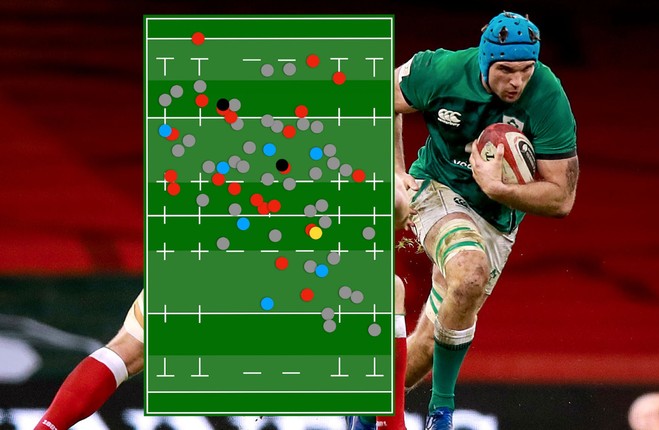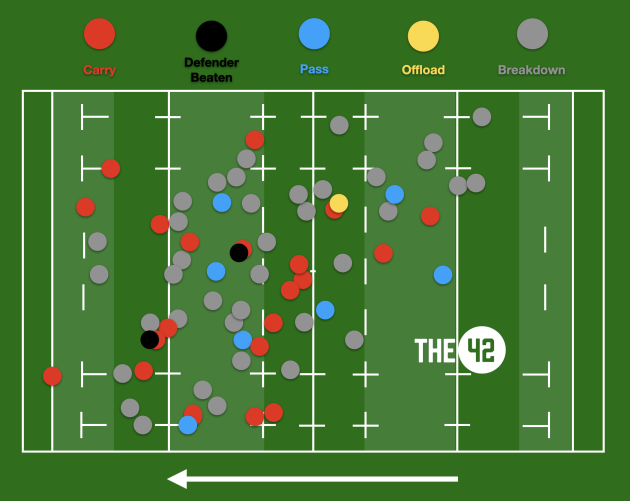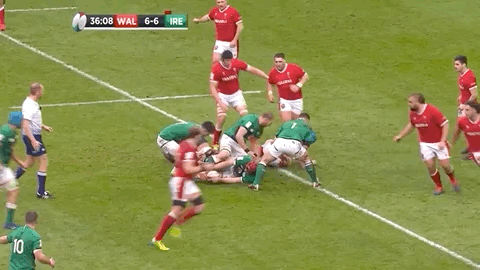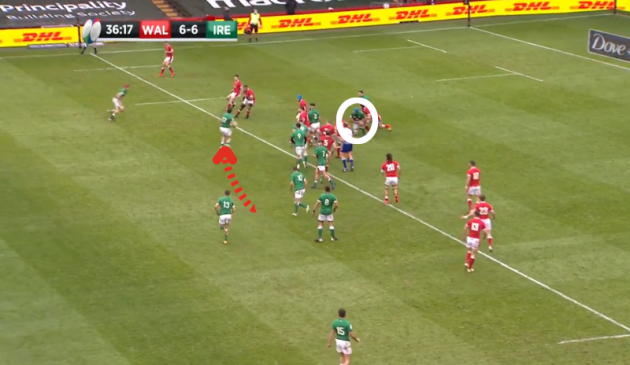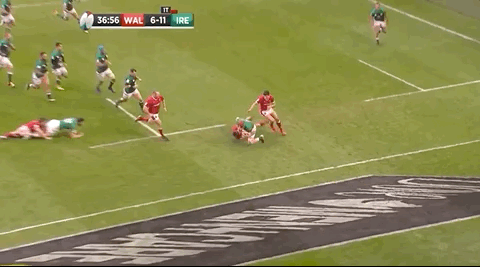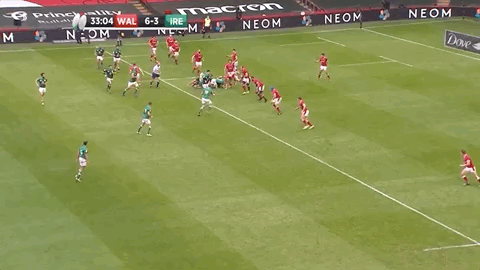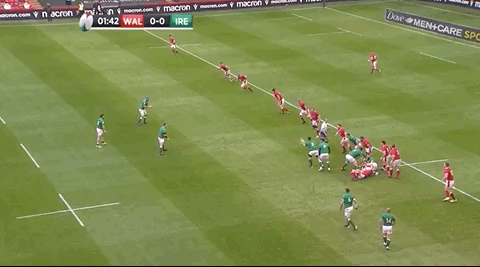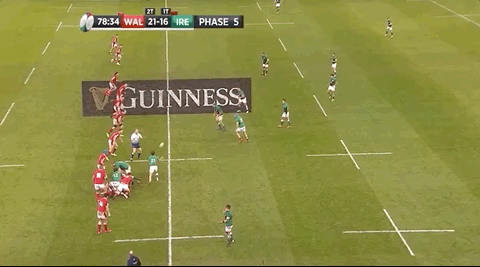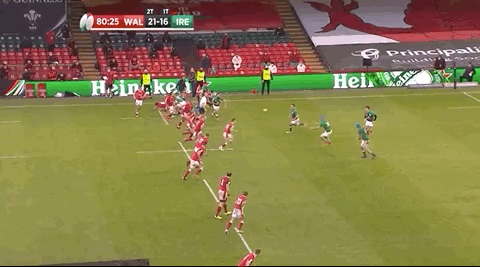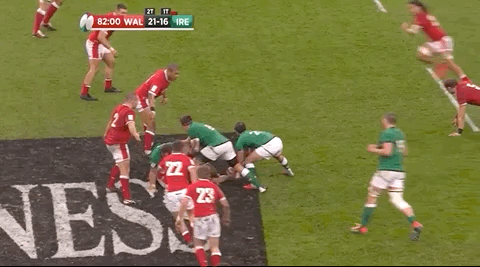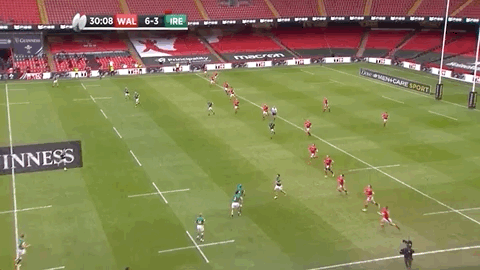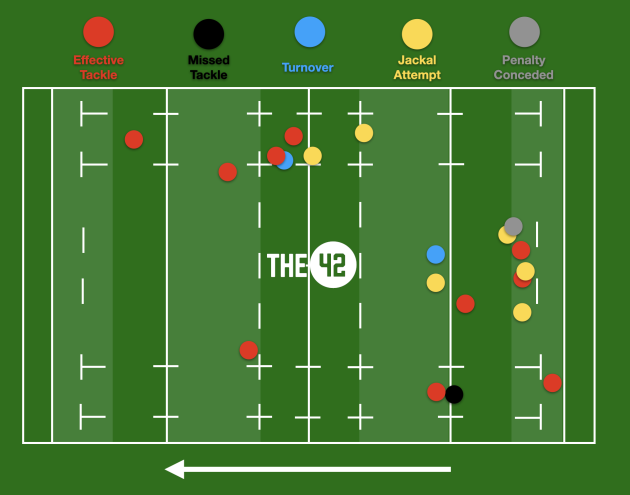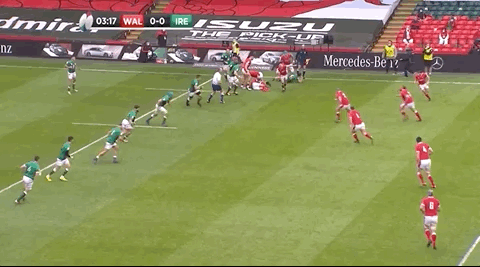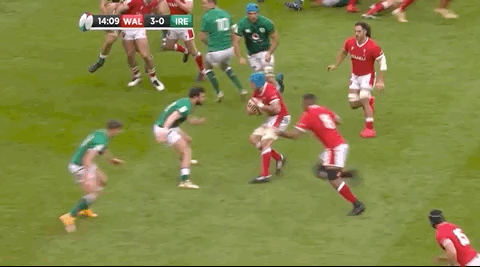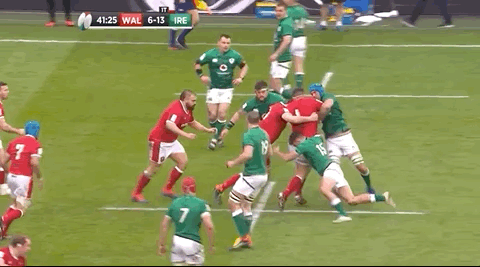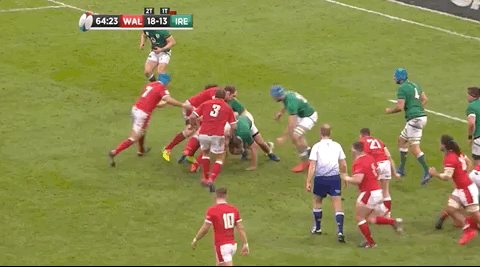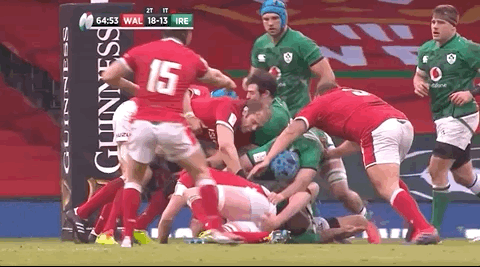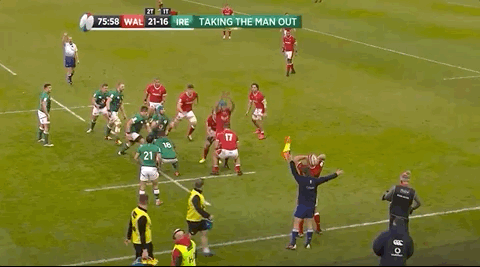THERE WILL DEFINITELY be a reshuffle in the Ireland pack for this weekend, with Peter O’Mahony facing a suspension for his red card against Wales.
James Ryan has to come through the return-to-play protocols after being forced off with a head injury last weekend, but Ireland boss Andy Farrell would have been pleased to watch Ulster’s Iain Henderson – just back from a knee injury – delivering a strong performance off the bench on Sunday having replaced Ryan.
Alongside Henderson in the second row, Tadhg Beirne had his best game for Ireland yet. The 29-year-old Munster man was making his 10th Test start and was a relentless presence across the 84 minutes of action as Ireland came up short in Cardiff.
If Ryan is fit to play against France this Sunday, there is an argument to be made for Farrell moving Beirne to blindside flanker, where O’Mahony will be missing, and bringing Henderson into the starting second row.
Whatever happens, Beirne has done everything in his power to retain his status as a starter for this monumental meeting with the French in Dublin.
Below, we see an illustration of Beirne’s contributions for Ireland in phase play attack.
The Kildare native was Ireland’s busiest ball-carrier in Wales, carrying 21 times for 28 metres. Most of his carries were into traffic close to the rucks, so he was never likely to post a high total of metres, but there were some impactful moments among them.
The carry above comes just before Beirne’s own try, with the lock working hard around the corner from a lineout turnover. There is a brief moment of hesitation as scrum-half Conor Murray assesses his options but Beirne then re-accelerates to pick out space in the Welsh defence and get over the gainline.
As Robbie Henshaw switches off Johnny Sexton on the next phase, Beirne is working back to his feet…
… and he follows up Henshaw’s break and offload to Josh van der Flier to calmly pick and snipe over for the try that sends Ireland in front just before half time.
Ireland had a huge amount of possession on Sunday – over 26 minutes of it, which is very high – so there was lots of work to do on the attacking front.
As well as being Ireland’s busiest carrier, Beirne was also involved at 38 attacking rucks, with 37 of those arrivals being as one of the first three Irish players in.
The official Six Nations stats also have Beirne down for 13 cleanouts, i.e. where he made an impact in moving a Welsh body to provide a clean recycle for Ireland.
We get one good example below as Beirne makes an excellent clearout on Taulupe Faletau just as the Wales number eight bounces back to his feet to threaten.
This one-man clearout by Beirne exemplifies the accuracy he brought to the attacking breakdown as he dips in underneath Faletau to shift him up and backwards, providing Ireland with lightning-quick ball.
On top of his mammoth workload in carrying and hitting rucks, Beirne was also prominent as a passer of the ball. He had seven passes in total, as well as one offload – more than any other Irish forward.
Farrell and attack coach Mike Catt have handed more decision-making responsibility to their players over the last year and while some have struggled with it, Beirne is very comfortable in making decisions on the ball.
Above, we get an early example as Beirne poses a carrying threat to the Welsh defence, keeping his body ‘square’ to the line, but then tips-on a pass to Andrew Porter outside.
Tip-on passes come with a danger of being turned over as the passing player often gets tackled or checked by a defender and therefore can’t hit the ensuring breakdown, but Porter does well here to hold his feet, giving Beirne and Cian Healy time to arrive, latch onto him, and drive forward for a few more metres.
Below, Beirne acts as a link between stand-in scrum-half CJ Stander and Henshaw, giving the Ireland centre more time on the ball.
There is a brief chance for Henshaw to shift the ball wider again but he opts to step back inside.
Late in the game, we see a nice tip-in pass from Beirne as Will Connors runs an aggressive line on his inside shoulder.
Again, Beirne follows up well to ensure Ireland recycle rapidly.
Minutes later, Beirne receives a tip-on pass from Connors and then swivels to find out-half Billy Burns.
Burns’ pass to Jordan Larmour is then batted down deliberately by Nick Tompkins and arguably should lead to a yellow card.
When Ireland resume their efforts to grab a late winning score, Beirne demonstrates his ability to offload out of contact as he finds Jamison Gibson-Park.
Beirne’s handling skills are a real point of difference when he is being weighed up against other options in the Ireland depth charts.
While several other Irish forwards are comfortable in delivering passes, Beirne has excellent instincts and decision-making skills that allow him to choose his moments effectively and sometimes slip out of the game plan to play what’s on.
We saw another example of his handling ability under a Welsh 22-metre restart in the first half, as Beirne reached overhead to claim the ball with support from Porter behind him.
Defensively, Beirne was busy too. Below is an illustration of his defensive work in phase play against the Welsh.
Beirne was joint-top of Ireland’s tackle charts with CJ Stander on 10.
The second row generally made effective low tackles like the one below that allows Stander to have a turnover attempt.
Beirne did miss one tackle in this game and it was nearly a costly one as George North hitched through the Irish lock’s attempt, then offloaded to Louis Rees-Zammit, only for Ireland fullback Hugo Keenan to make a very decisive read and hit on the Wales wing to prevent him from getting the ball away to Josh Navidi in space along the right touchline.
Of course, Beirne’s jackal ability is another major point of difference for him and he posed his usual threat in that sense. As we saw with the chart earlier, Beirne arrived at more opposition breakdowns than any other Irish player in this game.
It’s rare that Beirne goes without at least one jackal turnover in a game and he picked his moment in the 15th minute just after O’Mahony’s red card to pounce.
As is habitual, Beirne is hunting from the inside of the carry and wins the race to the ball, approaching from the side but instantly planting his feet in behind the tackle to ‘paint a good picture’ for referee Wayne Barnes.
Beirne gets his left hand to the ball just before Navidi arrives and though the Irishman can’t lift it completely clear of ball-carrier Justin Tipuric at first, the ball does come up and loose of Tipuric’s grip, with Barnes satisfied for Beirne to then gather it.
Beirne made another turnover in the second half, although this one was a ‘strip’ or ‘reef’ in a tackle.
Initially, Beirne is looking for a choke tackle as he calls “maul” but Keenan brings Wyn Jones to ground and the Irish lock instead forcefully rips his left hand away underneath the ball to force it loose.
Again, Barnes is happy with Beirne’s effort, shouting, “Ripped, ripped as I called it [the tackle]” and Ireland can play with turnover possession.
Of course, Beirne was penalised by Barnes in this game for another of his turnover attempts. This penalty allowed the Welsh to kick three points for a 21-13 lead.
It looked like a legal effort from Beirne at the time but Barnes instantly blew his whistle and awarded Wales a penalty, saying, “It [the ball] is still in the tackle zone. It’s still in the tackle zone… Entry”
‘Tackle zone’ is not a phrase we have heard often in Test rugby and Ireland were clearly confused by the decision, asking for clarification.
Barnes: “It’s still in the tackle zone and he has come in at the side. It’s a tackle, so he has got to come from the back foot.”
As we can see above, the latching Welsh players all go to the ground to the right of ball-carrier Adam Beard, who wriggles further clear of them to leave the ball totally exposed.
It does seem to be clearly out and Beirne approaches it from the direction of his own tryline, rather than side-on.
But Barnes believes he has infringed and awards the penalty to Wales, one that could arguably have been given for Rob Herring’s no-arms tackle on Beard anyway.
Beirne also had a heavy load at set-piece time, packing down at loosehead lock for the 10 scrums over the course of the game – three of which Ireland opted to put only seven players into after O’Mahony’s red card.
Beirne had a team-leading four lineout wins for Ireland, although he did give up a defensive penalty in this area for playing the arm of Tipuric in the air.
It’s a moment of poor discipline from Beirne as he desperately looks for a steal with Ireland chasing the game late on.
Beirne helped redeem the situation very soon after, however, as the Irish pack came up with a maul turnover from the ensuing Welsh lineout off this penalty.
Beirne didn’t contribute a lineout steal in this game as James Ryan made two and CJ Stander also picked one off, but his ability in that area is well known.
As Ireland look towards France on Sunday, Beirne surely has a central role to play again.
Originally published at 16.36
